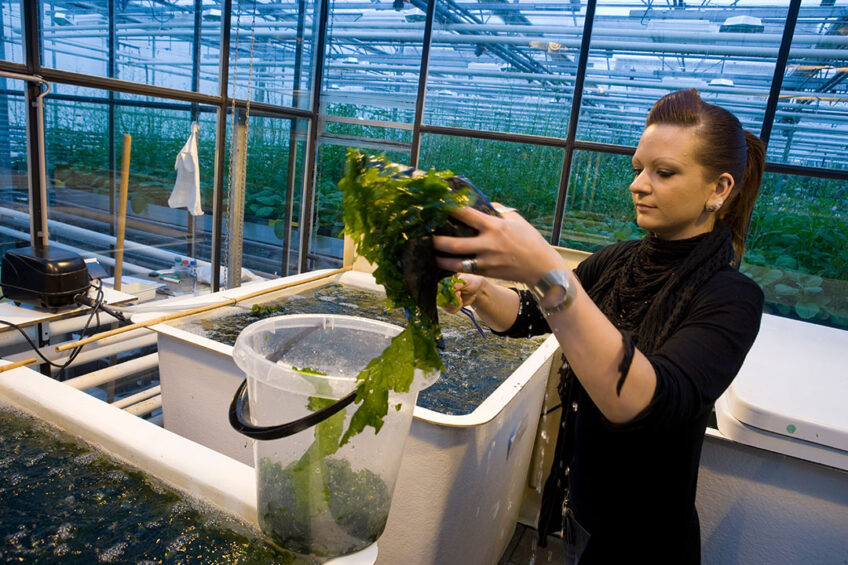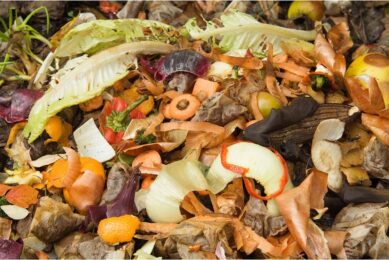Benefits of seaweed-based pellet binders in broiler diets

High-quality pellets withstand rough handling, such as during transport, storage, and due to conveyance in feed lines. A recent study has shown that the use of binding agents from natural sources like seaweed not only help achieve the desired pellet quality but also improve bird performance.
Besides improving bird performance, the feed industry aims for feed quality that lowers the cost of production by reducing feed dustiness and wastage. There are several factors that affect pellet quality, but the main one is feed formulation, which involves the raw materials and additives used in the formulation.
Some feed ingredients have a positive impact on pellet quality, while others can adversely affect quality. In previous studies it has been observed that feed formulation and grinding have a greater impact (60%) on physical pellet quality than other factors related to the pelleting process (40%). However, the use of synthetic pellet binders, such as calcium lignosulfonate and bentonite, have no specific benefits in terms of the growth performance of the bird. In addition to bird performance, pellet binders from natural sources like seaweed can contribute to a better environment and possibly to improved preference for the meat product.
A source of hydrocolloids
Seaweed is an important source of hydrocolloids, such as agar, alginate, and carrageenan. These hydrocolloids can be described as water-soluble carbohydrates used to increase the viscosity of solutions to form gels. Based on these seaweed properties, researchers from the University of Malaysia Pahang carried out a study to evaluate the benefits of using seaweed-based pellet binders in relation to a number of parameters.
In this study, 2 seaweed species, Kappaphycus alvarzeii and Sargassum polycystum were used as pellet binders to evaluate their benefits on pellet quality, growth performance, feed efficiency and the carcass characteristics of broilers from 1-35 days of age. The diets consisted of a control (no additive), a commercial binder and 3 levels of each seaweed; Seaweed 1: basal diet + S. polycystum at 2%, 5%, and 10%, and Seaweed 2: basal diet + K. alvarezii at 2%, 5%, and 10%.
An improvement in pellet quality
Pellet quality was measured using the Pellet Durability Index (PDI), along with pellet hardness for all the diets. PDI mainly indicates the ability of the pellet to resist attrition during storage and transport. In terms of pellet hardness, it is generally accepted that harder pellets will also be more durable.
The value of fish silage for broilers
The inclusion of fish silage in broiler diets leads to improved growth performance and meat quality. Using materials that would otherwise be dumped offshore reduces waste and environmental pollution while providing a good source of essential amino acids and minerals. Read more…
The results of the PDI and pellet hardness measurements performed on the pellets produced with the addition of seaweed powder (K. alvarezii and S. polycystum) indicated an improvement in pellet quality. The treatment with S. polycystum added showed a higher PDI score than the control, the K. alvarezii and the commercial binder diets. While the PDI of both the K. alvarezii and the commercial binder were no better than the control diet, for both seaweed species, the PDI values were higher for the 2% and 5% inclusion levels than the 10% level.
Pellet hardness
In terms of pellet hardness, the K. alvarezii at 5% showed the highest value compared to the rest of the diets, while the S. polycystum and commercial binder were better than the control. Compared to S. polycystum, the greater hardness values from K. alvarezii were attributed to its greater swelling capacity and water retention capacity that improve the physical and structural properties of the pellet. In addition, K. alvarezii showed a greater gel strength and more viscosity compared to S. polycystum. This was attributed to the type of polysaccharide content in the 2 species. While K. alvarezii produces carrageenan, S. polycystum does not produce carrageenan but alginate instead. Carrageenan can form a strong and rigid gel when mixed with water.
An increase in feed intake
All the different levels of seaweed addition showed increased feed intake during both the starter and the grower-finisher phases. A comparison between the 2 seaweed species showed that the red seaweed (K. alvarezii) was more acceptable to broiler chickens than the brown seaweed, S. polycystum. Body weight gain was more for the K. alvarezii compared to the S. polycystum diet. Broilers fed with 2% K. alvarezii had the highest body weight gain compared to the 5% and 10% inclusion levels of the same seaweed species.
Better feed conversion
The feed conversion ratio (FCR) measured during the finisher period was better for both the K. alvarezii and the S. polycystum compared to the control at the 2% and 5% inclusion rates. The 10% inclusion level for both the K. alvarezii and the S. polycystum was higher compared to the control. The best FCR was observed with the 2% K. alvarezii diet. This was attributed to better pellet quality observed with K. alvarezii as a good pellet binder will keep all the ingredients intact and can be easily consumed by birds.
Inclusion level
There was no significant difference between treatments except for thigh and breast yield. Breast yield was higher with 5% K. alvarezii compared to the other treatments. Highest thigh yields were found with the 5% S. polycystum and the commercial binder diets. The yield of carcass, wings, drumstick, liver and abdominal fat were not affected by dietary treatment.
The researchers concluded that both seaweed species K. alvarezii and S. polycystum at 2-5% could serve as a potential pellet binder that improves growth performance and feed efficiency in broilers with no adverse effects on carcass parameters. In addition, owing to their hydrocolloid content and other properties, such as swelling capacity, water retention capacity and gel formation capacity, both of these seaweed species can improve the quality of pellets in broiler diets.
Join 31,000+ subscribers
Subscribe to our newsletter to stay updated about all the need-to-know content in the poultry sector, three times a week. Beheer
Beheer








 WP Admin
WP Admin  Bewerk bericht
Bewerk bericht